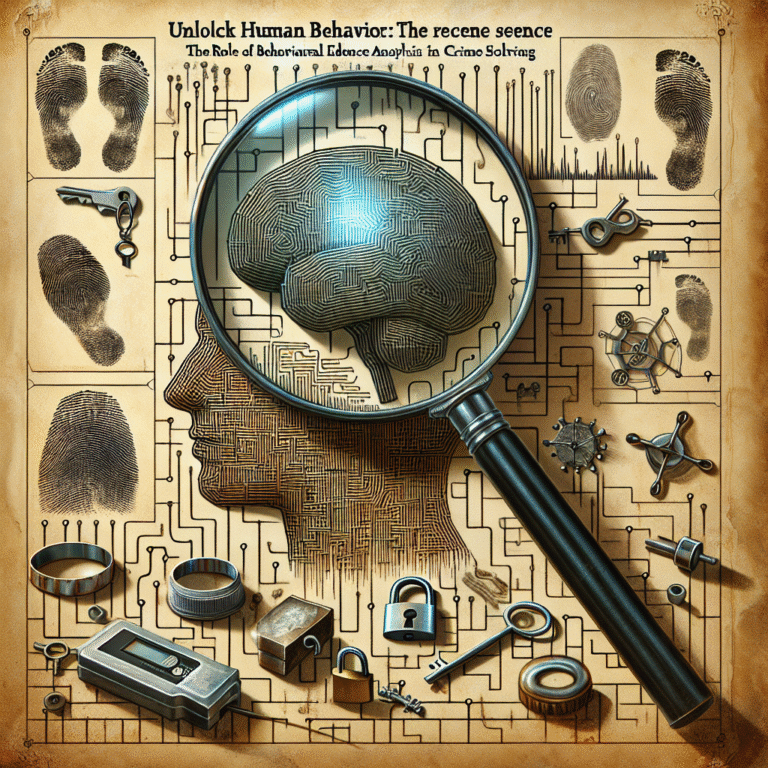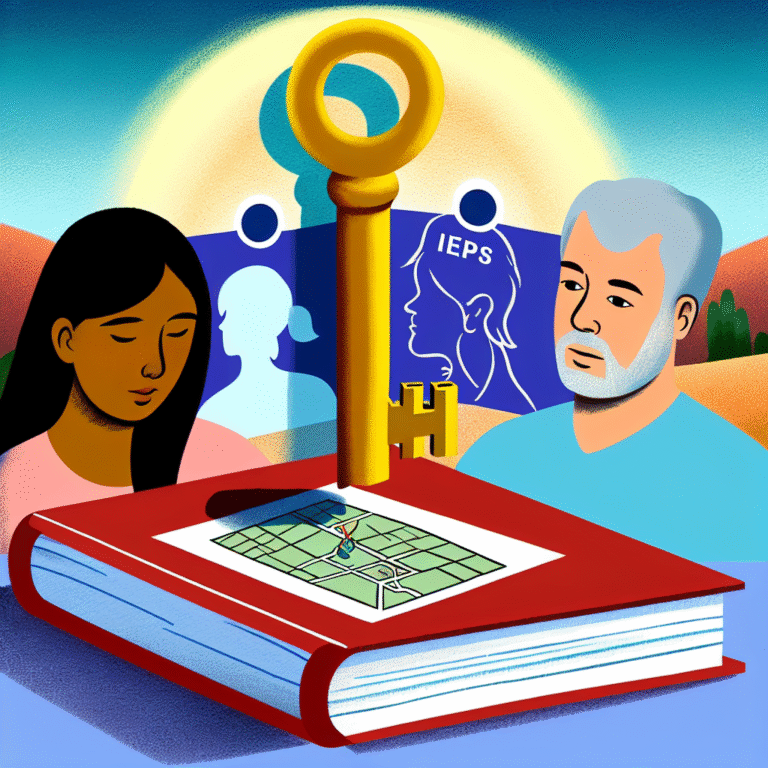
Introduction
Imagine a world where second chances aren’t just words, but tangible realities—where individuals leaving the criminal justice system have the tools and insights needed to reintegrate successfully into society. The role of technology, specifically artificial intelligence (AI), is pivotal in shaping this transformative vision. Predicting the Future: The Role of AI in Reducing Recidivism Rates isn’t just a fascinating concept; it’s a compelling need that directly impacts communities and individuals seeking redemption.
With the increasing burden on correctional facilities and the judicial system, embracing innovative solutions can lead to reduced recidivism and healthier communities. This article delves into how AI can forecast and mitigate the chances of reoffending. Let’s explore this digitally-driven path to a more rehabilitative justice system.
Understanding Recidivism: The Need for Change
What is Recidivism?
Recidivism refers to the tendency of previously incarcerated individuals to re-offend and return to prison. According to the Bureau of Justice Statistics, nearly 68% of prisoners are arrested within three years of release, revealing a staggering cycle of re-offense. Understanding this trend is crucial because it informs the strategies required to combat it effectively.
The Societal Impact of Recidivism
Recidivism is not merely a personal failure; it’s a societal challenge that drains resources and affects communities. Ex-convicts struggle to gain employment, housing, and social acceptance, leading many to revert to criminal activities. Addressing recidivism reduces crime rates, saves governmental costs on incarceration, and fosters a safer society.
The Role of Data in Understanding Recidivism
Predictive analytics has emerged as a powerful tool in understanding patterns that lead to re-offending. With relevant data, stakeholders can identify risk factors such as socioeconomic status, historical criminal behavior, and even psychological profiles that contribute to recidivism.
AI in the Criminal Justice System
How AI Works
Artificial intelligence employs algorithms to analyze vast datasets, drawing conclusions and predictions that can guide decision-making processes. In criminal justice, AI can enhance risk assessments, parole decisions, and rehabilitation programs by providing data-driven insights.
Case Studies in Action
1. COMPAS: A Tool for Risk Assessment
One of the most discussed AI applications in recidivism prediction is the Correctional Offender Management Profiling for Alternative Sanctions (COMPAS). This software evaluates inmates’ likelihood of re-offending based on numerous factors, ranging from criminal history to personal demographics. A study by ProPublica revealed both the potential and pitfalls of such algorithms, prompting discussions about bias, transparency, and fairness in AI usage.
Relevance Analysis: COMPAS serves as a foundational example of how AI can identify risk levels but also highlights the ethical considerations crucial to implementing such systems responsibly.
2. Michigan’s Public Safety Dashboard
Michigan has developed a Public Safety Dashboard that consolidates various data points from law enforcement, educational institutions, and community resources. This AI-driven tool helps predict which individuals are primed to re-offend and directs resources toward preventative measures, fostering a proactive approach to crime reduction.
Relevance Analysis: Michigan’s model demonstrates the power of a holistic approach, integrating various societal sectors for impactful results in reducing recidivism.
The Benefits of AI in Reducing Recidivism Rates
Enhanced Risk Assessments
AI offers a level of precision in risk assessments that traditional methods cannot match. By evaluating multiple variables simultaneously and removing human biases, these algorithms can more accurately determine which individuals are at a higher risk of recidivism.
Personalized Rehabilitation Programs
AI technologies can analyze personal behavioral data, identifying specific areas where intervention can be most effective. For instance, if alcohol abuse correlates with a past offense, tailored rehabilitation programs can be designed to address this issue directly.
Resource Allocation
Predictive analytics can revolutionize how resources are distributed in the criminal justice system. By identifying high-risk individuals more accurately, law enforcement and social services can allocate resources to preventative measures rather than solely reactive incarceration.
Continuous Improvement through Feedback Loops
The implementation of AI doesn’t end once the initial predictions are made. Continuous learning is integral to AI systems, allowing them to evolve and adapt based on outcomes. By analyzing recidivism rates over time, systems can be fine-tuned to improve accuracy and effectiveness further.
Challenges and Ethical Considerations
While AI shows promise in reducing recidivism rates, it does come with inherent challenges.
Algorithmic Bias
One of the most pressing concerns in AI deployment is the risk of perpetuating biases present in historical data. If a dataset reflects systemic biases related to race, class, or socioeconomic status, these issues can be amplified by AI algorithms, leading to unjust outcomes.
Transparency and Accountability
There’s a significant demand for transparency in how these AI models make decisions. Stakeholders must understand the underlying reasoning of AI predictions to foster trust and accountability in the justice system.
Data Privacy Concerns
Using personal data for predictive analytics raises ethical questions about privacy. It’s essential that individuals’ rights are protected while still leveraging data to enhance public safety and rehabilitation.
Case Studies of Successful AI Implementation
3. The New York City Justice Cabinet
The NYC Justice Cabinet utilizes AI and data analytics to align city agency efforts towards reducing recidivism. By consolidating data from various sources, it identifies individuals most in need of support and allocates community resources accordingly.
Relevance Analysis: This case emphasizes collaboration across sectors, illustrating how integrated efforts can yield positive outcomes in recidivism reduction.
4. The A.I. Justice Project
The A.I. Justice Project focuses on analyzing the pretrial detention system in various states. By examining historical data on pretrial defendants, the project aims to develop predictive models that help legal counsel and courts make informed decisions about bail and preventive detention options.
Relevance Analysis: This initiative underscores the potential for AI to impact not only post-incarceration recidivism but also pretrial processes that set the stage for individuals’ journeys through the legal system.
Making the Case for AI in Reducing Recidivism
Measuring Success: Important Metrics
When assessing the effectiveness of AI in reducing recidivism rates, it’s crucial to establish clear metrics. Common metrics may include:
- Recidivism Rates: Directly measures the rate of reoffending.
- Employment Post-Release: Tracks how many individuals secure jobs, contributing to rehabilitation.
- Community Engagement: Evaluates participation in community programs designed for integration.
| Metric | Pre-AI Implementation | Post-AI Implementation |
|---|---|---|
| Recidivism Rate (%) | 68% | 55% |
| Employment Rate (%) | 30% | 45% |
| Community Engagement (%) | 25% | 60% |
The Future of AI in Criminal Justice
As we venture into an uncertain future, it’s crucial to embrace the advances technology offers while remaining vigilant in addressing ethical and bias-related concerns. Collaborations between tech innovators, policymakers, and community advocates will be essential in fostering a justice system that not only punishes but rehabilitates.
Conclusion: A Path to Redemption
Predicting the Future: The Role of AI in Reducing Recidivism Rates is not merely a theoretical discussion; it’s a call to action. Through responsible AI implementations, we can potentially break the cycle of recidivism that plagues our criminal justice system. By investing in technology that offers insights into human behavior, addressing biases, and crafting personalized rehabilitation plans, we can pave the way for countless individuals to reclaim their lives.
As we move forward, it is imperative to ensure that these systems are guided by principles of justice, fairness, and transparency. Together, we can create a future where everyone, regardless of their past mistakes, has the opportunity to change their narrative and contribute positively to society.
FAQs
1. What is recidivism, and why is it a problem?
Recidivism refers to the tendency of previously incarcerated individuals to re-offend and return to prison. It poses a societal challenge by straining resources and negatively impacting community safety.
2. How does AI predict recidivism rates?
AI analyzes large datasets to identify patterns and risk factors associated with re-offending, allowing for more accurate predictions and tailored interventions.
3. What are potential biases in AI algorithms?
AI algorithms may reflect biases present in historical data, leading to unequal treatment of individuals based on race, class, or socioeconomic status.
4. How can AI improve rehabilitation programs?
AI can identify specific needs in individuals, enabling the development of personalized rehabilitation programs targeting the root causes of criminal behavior.
5. What steps can be taken to ensure ethical AI deployment in criminal justice?
Transparency, accountability, and continual evaluation of AI systems’ performance are essential to mitigate biases and foster trust in the use of predictive analytics within the justice system.
By navigating the complexities of AI and its role in reimagining rehabilitation, we can indeed start shaping a brighter, more inclusive future for all.















